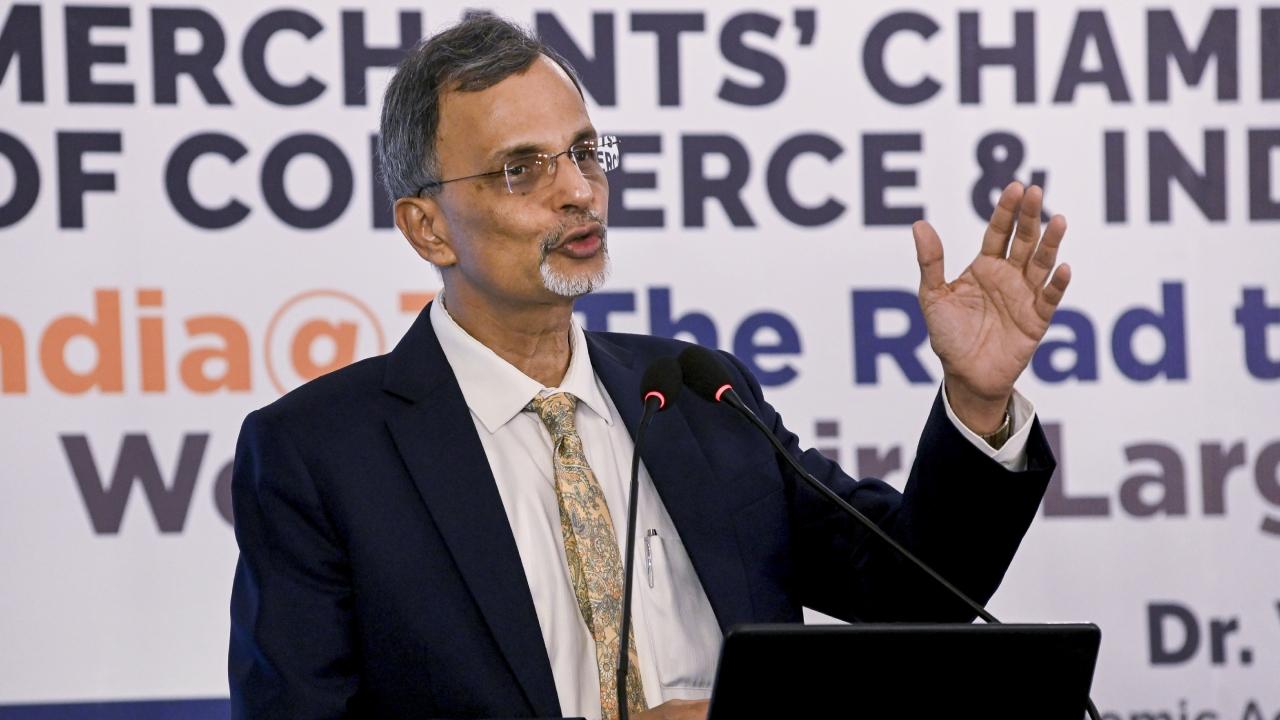Chief Economic Adviser (CEA) V Anantha Nageswaran expressed optimism on Thursday that a resolution to the tariff-related issues with the United States could be reached within the next eight to ten weeks, reported the PTI.
Speaking at an interactive session hosted by the Bharat Chamber of Commerce, Nageswaran said, “Underneath the surface, conversations are going on between the two governments. My hunch is that in the next eight to ten weeks, we will likely see a solution to the tariffs imposed by the US on Indian goods,” according to the PTI.
The United States had imposed an additional 25 per cent tariff on Indian goods from August in response to India’s purchase of Russian oil, bringing the total levy on certain products to 50 per cent. The CEA warned that if these tariffs remain in place, Indian exports to the US could decline.
Describing India as an aspirational lower-middle-income economy, Nageswaran highlighted that the real GDP growth for the first quarter of the current financial year stood at 7.8 per cent. He added that post-pandemic, India has outpaced many other economies in terms of recovery and growth, as per the PTI.
Nageswaran expects the manufacturing, services, and agriculture sectors to play a key role in driving economic progress over the next two years. Consumption and investment, he said, will continue to be the main pillars of growth.
He noted that India has a strong debt-to-GDP ratio, generating more GDP per US dollar of debt compared to many other countries — a sign of efficient capital utilisation. Additionally, rural demand remains resilient, while urban demand is improving.
The recent reduction in GST rates, he said, will result in more disposable income in the hands of consumers, potentially boosting urban consumption, the news agency reported.
The CEA also highlighted that credit to the MSME sector is on the rise, while lending to large industries is undergoing structural change. Resource mobilisation today is well supported by various financial channels.
India’s external sector remains solid despite global headwinds, with robust trade activity and healthy foreign exchange reserves. The current account deficit has eased to just 0.2 per cent of GDP in the first quarter of FY 2025-26.
Regarding the rupee, Nageswaran said, “The rupee is depreciating against the US dollar. But given the underlying strength of the economy, I believe the rupee is likely to stabilise and strengthen in the long term,” as per the PTI.
Outlining the government’s policy priorities, he stressed continued emphasis on capital expenditure, incentives for private investment, and systemic deregulation. Infrastructure development—particularly in ports and airports—has improved, ensuring that economic growth does not lead to overheating, he added.
Touching upon India’s trade with China, he noted that imports are largely composed of capital and intermediate goods. He urged the Indian private sector to increase investment in innovation and research and development (R&D).
On artificial intelligence (AI), Nageswaran remarked that its impact has been limited so far. He cautioned that entry-level coding jobs may be at risk, but overall employment effects are manageable—provided that workers upskill and adapt, the PTI reported.

Be First to Comment